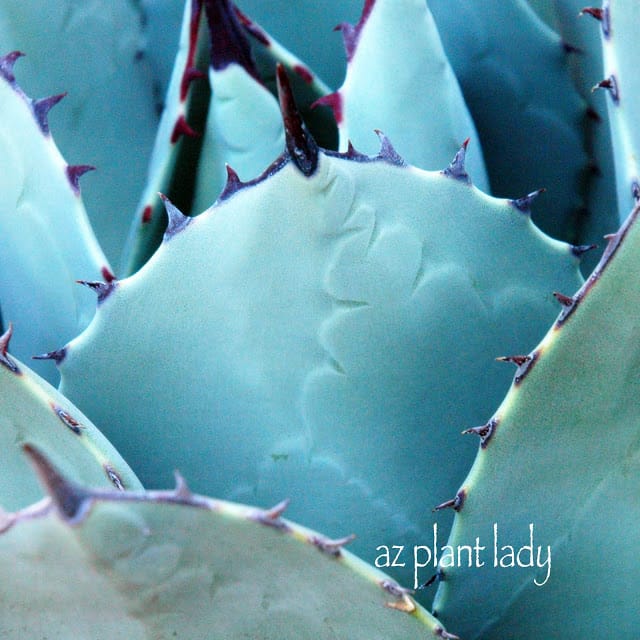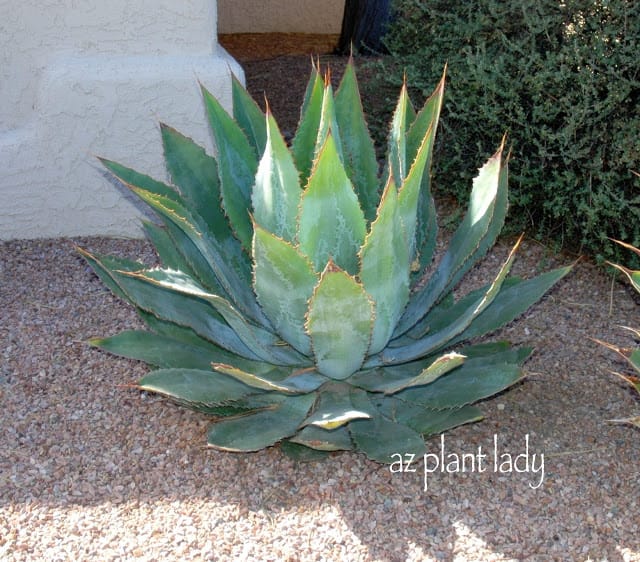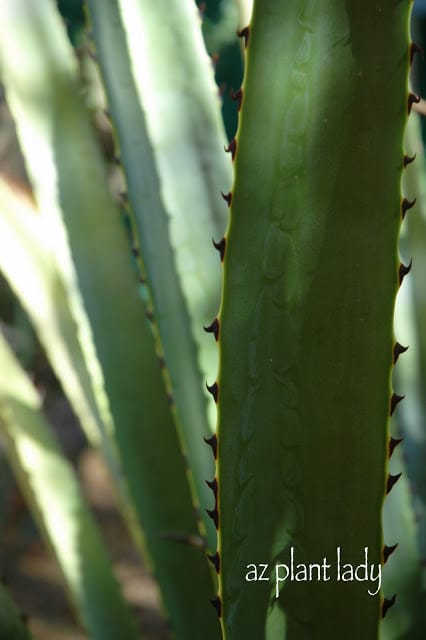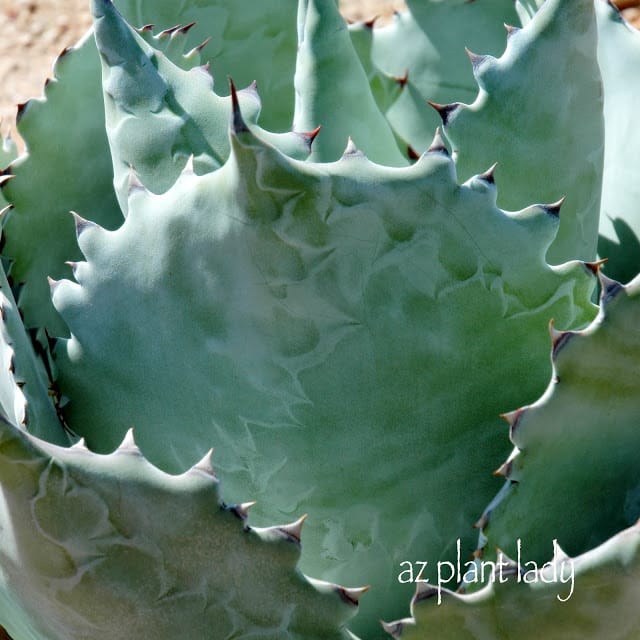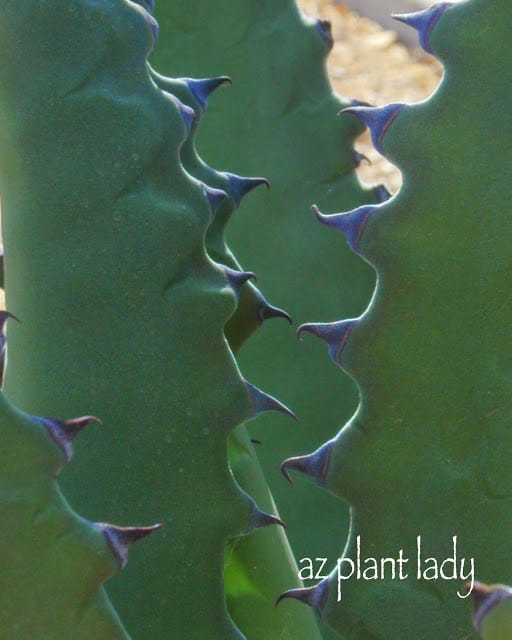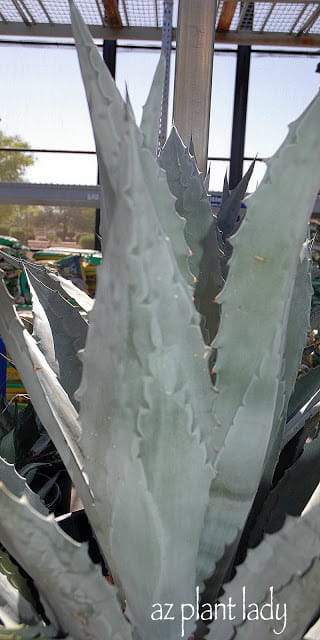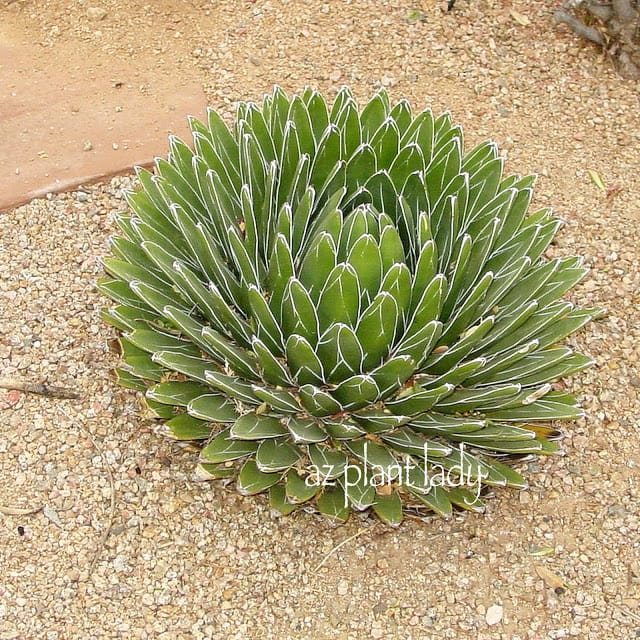Welcome to the second edition of “AZ Plant Lady Drive By: What’s Wrong With My Landscape”.
Where you able to figure out what was wrong with the landscape, below?

I got some great answers and they were all right, BUT only one person noticed one problem that others hadn’t.
Here are a few of the answers I received on Facebook:
“Huge needle sharp plants next to a walkway.”
“The century plants (agave) need more sun.”
“Agaves planted too close to walkway, tree planted too close to house, poor pruning of Bush between houses. Looks like the Bush was trimmed with a chain saw. The mixture of desert and green landscaping is a bit much.”
These were great comments and were correct, but there was one other problem that only one of my readers found. Here is her comment:
“Those agaves are going to cause a lot of trouble. They will multiply and take over the tiny area they are planted in.”
1. First of all, you should not plant prickly agave near areas where people walk – like along the driveway or an entryway. Getting pricked by an agave hurts – I have had this happen countless times to me while in the field and once or twice at home.
2. The choice of agave in this landscape is a poor one. The agave in this landscape are called Agave americana and are perhaps the most commonly found agave that I see in landscapes.
While these agave are attractive, they do have a characteristic that makes them high-maintenance – they produce lots of baby agave (also called volunteers or pups).
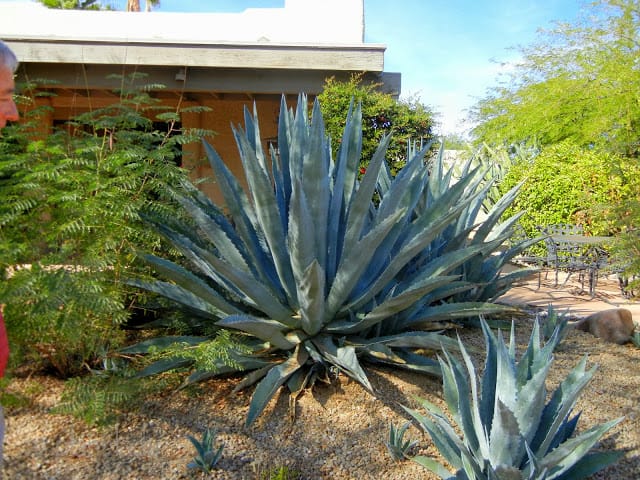
These volunteers are prolific and take a lot of time to cut them out. The agave group, above, started out as one Agave americana that then reproduced. The majority of agave pups were removed, but six still remain.
This homeowner has kept up with removing most of the volunteers – but it is hard work.

Removing the volunteers means getting up close to these prickly agave and it isn’t easy to remove them. You have to get your shovel down into the soil a few inches to cut off the volunteer from the parent plant.
Homeowners usually allow the volunteers to grow, which over time, creates a somewhat unattractive mass of agave. OR they remove them and plant them elsewhere in their landscape, which just increases the problem because those replanted agave babies will start making their own babies.
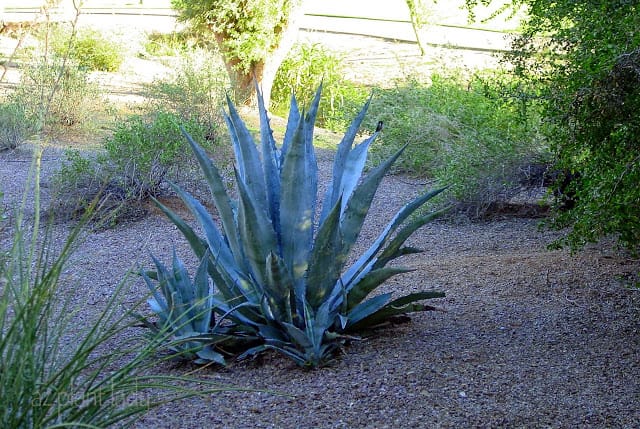
Now, I think Agave americana are beautiful (as does the little hummingbird perched on this one). But, I wouldn’t plant one in my garden.
So, is there a solution for homeowners like me who love how agave look, but don’t want lots of babies to take care of?
Yes!
There are many different species of agave that don’t produce volunteers, or not too many.
Here are a few of my favorites that will make a good substitution for Agave americana:
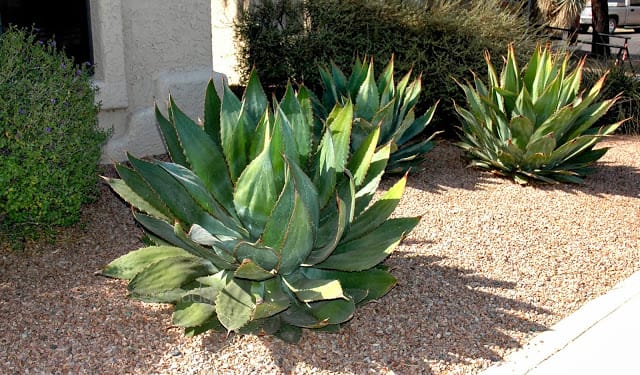
Cow’s Horn Agave (Agave bovicornuta) is a beautiful agave and does not produce any volunteers.
They will grow approximately 4 feet wide and tall. Plant in an area that receives filtered sun or afternoon shade. This agave is hardy to zone 9.
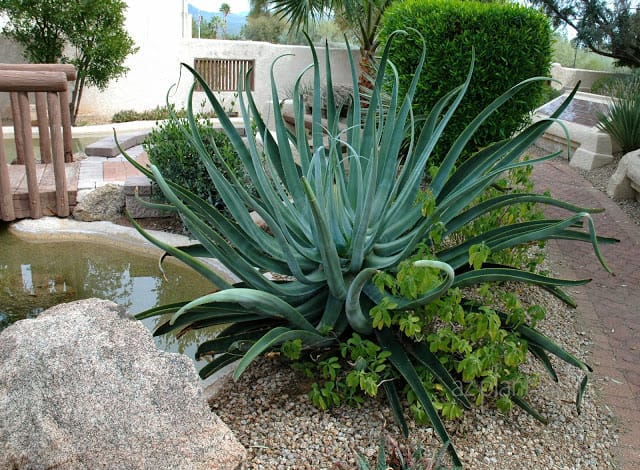
You can see why this agave is called ‘Octopus Agave’ (Agave vilmorniana). It does mimic that tentacles of an octopus.
This agave will not produce volunteers either. It does best in filtered shade or in an area that will receive afternoon shade. Hardy to zone 9.
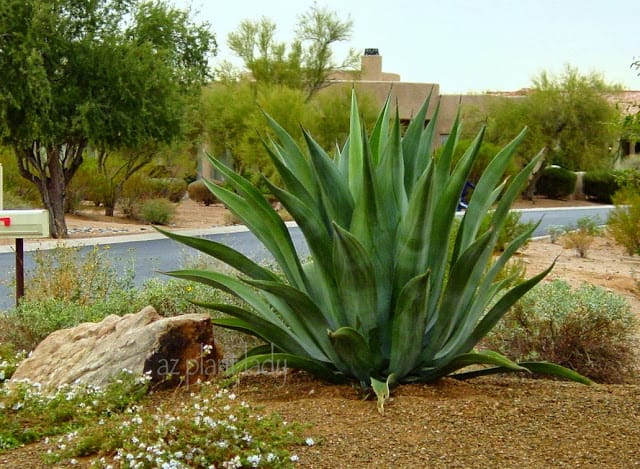
Weber’s Agave (Agave weberi) is my favorite large agave. I am using several in a new landscape area that I designed alongside a golf course.
This agave grow 5 feet tall and 6 – 10 feet wide. I does great in full sun. It does produce the occasional volunteer, but not many. Hardy to zone 7.
I hope you have enjoyed this edition of “AZ Plant Lady Drive By”. Thank you all for your comments. I’ll keep my eyes and camera ready for other “landscape no-no’s” to show you.
My goal is not to poke fun at those homeowners who have made mistakes. I want to help you to avoid making the same mistakes in your own landscape.
**IF YOU HAVE A PHOTO OF A ‘LANDSCAPE NO-NO’, PLEASE FEEL FREE TO SEND IT TO ME AT arizonaplantlady(at)gmail(dot)com
AZ Plant Lady Drive By: What’s Wrong With This Landscape?


